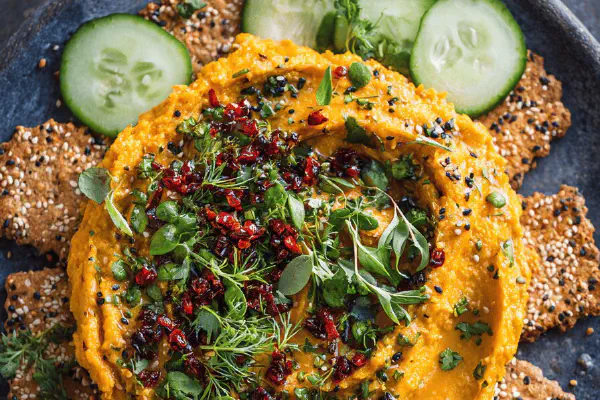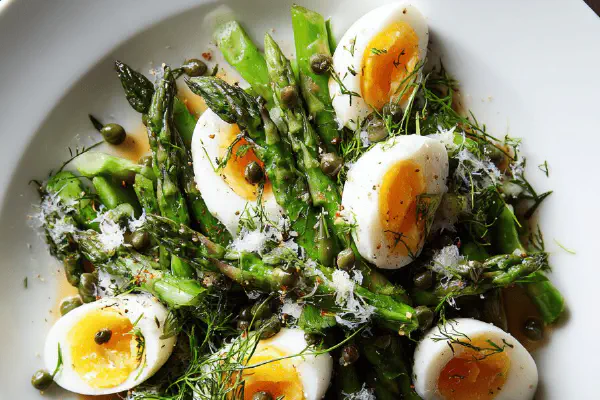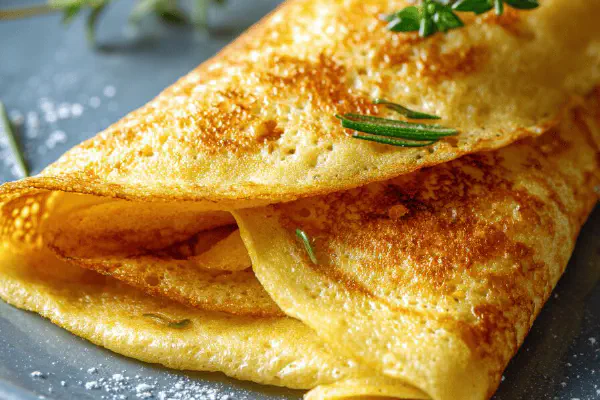Parmesan Pumpkin Purée Bite

By Emma
Certified Culinary Professional
Ingredients
- 1 small kabocha or similar pumpkin about 400 grams
- 100 ml grated pecorino romano cheese
- 1/4 teaspoon smoked paprika
- Salt and freshly ground black pepper to taste
- Sesame crackers or cucumber slices for serving
- Optional garnishes: herb gremolata, pepperonata, thin slices of cured sausage or dairy-free crème fraiche alternatives
About the ingredients
Method
- Setup oven rack mid-level. Preheat to 185 C. Line baking sheet with parchment.
- Rinse pumpkin, slice in half lengthwise. Scoop out seeds and fibrous strands; keep seeds if roasting separately later.
- Place pumpkin halves cut side down on sheet. Roast until skin wrinkles slightly and flesh pierces easily with knife tip, about 50 minutes but vary by size and moisture content.
- Remove from oven. Let cool until warm to touch; temperature prevents cheese in next step from clumping or overheated flavor.
- Scoop flesh into bowl, mash roughly with fork or potato masher until chunky yet cohesive. Reserve about 250 ml of purée.
- Mix purée with pecorino and smoked paprika in microwave-safe bowl. Season with salt and pepper. Heat in 15-second bursts stirring between to ensure cheese melts evenly and doesn’t separate or seize.
- Taste for salt and adjust. Purée should be creamy but still thick enough to mound.
- Spoon 5-10 ml on each cracker or cucumber slice, spreading gently but leaving some height. Top with gremolata, pepperonata, or thin cured sausage to add freshness, acidity, or fat contrast.
- Serve immediately or keep chilled briefly. Leftover purée freezes well but may lose firmness; ideal for soups or sauces then.
- Common issues: pumpkin not soft enough means longer roasting or smaller cuts next time. Cheese clumping signals too high heat—use lower wattage or stir more often.
- Substitutions: Parmesan can be replaced by a hard vegan cheese or nutritional yeast for dairy-free. Kabocha replaced by butternut but expect slightly different sweetness and moisture.
- Tip: roasting pumpkins with skin on concentrates sugars differently than peeled chunks; patience on roasting pays off flavorwise.
Cooking tips
Chef's notes
- 💡 Roast pumpkin halves skin on mid rack—skin wrinkles a bit, no shiny gloss, fork slides in with faint resistance. Timing varies; weight and moisture demand you watch not clock. If still firm, add 10-15 minute chunks instead of guessing. I once left it less soft, bites turned grainy, no go.
- 💡 Cheese melt is tricky—lower wattage or 15-second bursts. Stir constantly. High heat kills fat proteins causing clumps or oily patches. Use pecorino for sharper edge; good quality cheese matters here. Dairy-free? Nutritional yeast with olive oil helps mimic texture but skip heating too long.
- 💡 Texture balance means chunky, not mousse or pureed soup. Use fork mash or potato masher, keep interest but purée sticks together. Too smooth and topping slides off crackers; too rough and no cohesion. Chunky consistency holds better for bites and layering garnishes.
- 💡 Freeze leftovers in small portions. Expect separation on thaw; water rises, texture loosens. Best used in soups, sauces where you cook again. Thaw in fridge not microwave. Re-mash or whisk before reheating for even texture. Do not leave squash purée long at room temp—spoil risk.
- 💡 Season early but taste final after melting cheese. Salt impacts cheese melt texture and flavor perception. Add smoked paprika last to keep smoky but gentle warmth, not overpowering. Crackers can be swapped for cucumber slices or gluten-free alternatives, adjust moisture accordingly.
Common questions
Pumpkin not soft after roasting?
Increase oven time by 10-15 mins. Slice thinner next time. Bigger chunks take longer. Oven temp fluctuations happen. Skin wrinkles and fork slide are real cues. Dry oven with fan helps but avoid drying flesh. Slow check needed.
Can I use different cheeses?
Pecorino romano preferred but parmesan works. Hard vegan cheeses or nutritional yeast plus some olive oil good for dairy free. Flavor changes but same texture approach. Avoid soft cheeses here; melt fails and purée gets runny.
What if cheese clumps on melting?
Too high microwave power or overheat. Stop heat, stir more. Lower power or break heating into short bursts next. Stirring distributes fats better. Also check cheese quality; older cheese dries faster and clumps easier.
How long does leftover purée keep?
Few days refrigerated in airtight container. Freeze in portions for weeks. Thaw in fridge. Expect water separation; stir or re-blend before use. Use in cooked dishes for best results. Avoid refreezing thawed portions.



